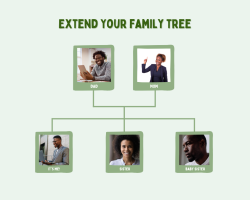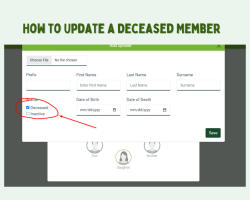The Nandi people are an ethnic group residing in the Rift Valley part of Kenya. They’re part of the larger Kalenjin community, which includes several other subgroups.
The Nandis are known as the warrior community since they resisted British rule in Kenya. Also, some of the finest long-distance runners, such as Eliud Kipchoge and Kipchoge Keino, come from the Nandi community.
They inhibit other parts of East African countries like Congo, Uganda, and Tanzania.
Here’s a brief overview of the Nandi way of life. Read on.
Origin and Migration
Historically, the Nandi settled in Mount Elgon and formed a Kipoiis clan. The first members were steered by a man called ‘Kakipoch.’ This first group is believed to migrate further and finally settled in Aldai, Nandi County.
Presently, the Nandi are inhabitants of Nandi County in Kenya, Uasin Gishu, and due to rural-urban migration, they’re distributed all over Kenya.
Dialect
Their languages belong to the southern Nilotic branch among the Nilo-Saharan languages. Their Nandi dialect distinguishes the Nandi.
Food and Economic Activities
The Nandi relied on farm produce for their daily living. The favorable climate and soils enabled them to plant crops like tea, maize, cassava, and millet. Before settling in the Rift Valley, they were pastoralists. They moved around with their cattle, providing them milk and meat for food, skin for clothing, and bride price during marriage.
Currently, the Nandi do well in agriculture. They own large tea plantations in Kobujoi-Chekumia and Nandi Hills areas. Dairy animal husbandry is also a prime revenue earner in the county.
Being the ‘Source of Champions,’ the Nandi also has many prominent athletes, not forgetting the beautiful landscape and ancient places like Koitalel Arap Samoei Museum, major tourist attraction sites.
Governance System
Amongst the Nandi, the family was the basic political unit. Many of these families formed homesteads, a collection called Koret. A dozen or more Koret formed a Pororiet, a more prominent political unit.
Leaders from every Koret earned these positions by their social status, personality, and wealth. The council of elders and the leaders from the Kokwet settled disputes in the society through consensus.
Colonial Feuds
Between the years 1890 and 1906, the Nandi Resistance came to be. The resistance was a military conflict that involved members of the Kalenjin ethnic group, mainly the Nandi and the British Army. This resistance stood out as one of the longest and tenacious in the 19th century.
Led by the famous Koitalel Arap Samoei, the Orkoiyot of the Nandi at the time, the British Army was compelled to make a truce. That happened on 19th October 1905, on the grounds of what is now the Nandi Bears Club.
Koitalel Arap Samoei met Col Richard Meinertzhagen in what was said to be a peace meeting. However, Richard and his men ambushed and killed Arap Samoei and his entourage. That marked the end of the resistance.
Prominent leaders in the Nandi History
Here are the prominent leaders who existed in the history of the Nandi Community.
Kimnyole Arap Turukat
The Nandi people had higher-power individuals known as Orkoiyot. The well-known Orkoiyot was Koitalel Arap Samoei but there were others like Kimnyole Arap Turukat, who was the fourth Nandi Orkoiyot in the early 1800s.
Kimyole Arap Turukat was the son of Turukat and father to Koitalel Arap Samoei. He was a profound leader with commanding fear and a warrior. His exact birth year is unknown. He was a spiritual and military leader who consulted on security matters, particularly the waging of war.
During his reign, the Nandi people were a formidable force. Even with their constant conflict with the Maasai, they could keep calm and become observant under the leadership of this shrewd Orkoiyiot, eager to witness and take advantage of the divisions among the Maasai. His leadership made the Nandi the wealthiest tribe, with lots of cattle and captives from their victories.
However, his leadership and ability to predict the future were almost questioned in the late ’80s when Rinderpest, a cattle disease, struck the Nandi herd. Nandi warriors had captured Rinderpest-infected cattle. His people were not happy since he, Kimnyole, would have predicted the pandemic.
He is remembered for his prophecies about the coming of a ‘white tribe’ (white people) and the ‘iron snake’ (the construction of the Kenya-Uganda Railway).
Koitalel Arap Samoei
Koitalel Arap Samoei was the last-born son of Kimnyole Arap Turukat in around 1860. Being the last born, Arap Samoei was closest to his father. This closeness allowed him to understand prophetic signs compared to his older brothers. He succeeded his father as the Orkoiyot when he was only 25.
Arap Samoei led a 12-year revolt against the British for encroaching on their land. He is remembered to date for his outstanding leadership and a monument to his name.
Gender Roles and Status
The Nandi women took care of the household. They milked the cows and stored them in milk gourds called Kimusarit or soteet. The men went to war, built houses, cared for the cattle, and educated the male children.
Marriage and Family
Traditionally, amongst the Nandi, marriage was arranged. Parents of the bride and groom would find a suitor for their children and, later in a ceremony, pay the bride price in the form of cattle to the bride’s family.
The woman then moves to land provided by her husband. She would set up a small area for cultivation, Kabungui, on a piece of land owned by her husband. A metal bracelet was given to them at the time of marriage to show their status.
Clans and Totems
The Nandi ortinuek are each recognized by an ‘animal’ or tiondo, which no clan member could hunt. Clan symbols (tiondo) range from birds, wild animals, frogs, and snakes to bees. Although the sun is not an animal, ‘she’ has oreet and is called ‘tiondo’ in the same sense as a lion.
Here are the major Nandi clans and totems.
- Kipkenda Maimi – Segemiat (bee)
- Kiboiis – Lelwoot (jackal), Solopchoot (cockroach)
- Mooi – Kong’oony (Crested Crane), Soeet (Buffalo), Kergeng, Cheptirkiichet (Dik-dik)
- Kipkamoriet – Kogos, Chepkogosiot (Eagle)
- Kipsirgoi – Toreet (palee kut ak kutung’)
- Kipamui – Kergeng (Antelope)
- Sogoom – Chepsirereet (Hawk)
- Talai – Ng’etuny, Lion (Kuutwo, Talai Orkoi) Ng’etuny, Lion (Talai Nandi), Kipoongoi (che kwees tibiik), Taiyweet
- Kibiegen (kap rat setio let) – Moseet (Monkey), Muriat (rat), Kipaa (koros), Ndareet (Snake), Tisiet (Baboon)
- Toiyoi (moriso) – Ropta (rain), Birechik (Safari Ants)
- Kap Oiit – Beliot,
- kiramkeel Koe – Kipleng’wet (rabbit)
- Kipasiiso (Kap koluu) – Asista (Sun)
- Kuchwa – Mororochet (frog)
- Tungo (korap oor) – Kimageetiet (Hyena)
- Kiptabkei – Chereret (syke monkey)
Age Sets
The Nandi social organization revolved around age sets, known as “ibinda.” There are eight rotational age sets, called “ibinwek,” among the Nandi community. As one age set completes its cycle, new members of that generation are born, and a new age set begins. The approximate order of the age sets is as follows:
- Maina
- Chumo
- Sawe
- Kipkoimet
- Korongoro
- Kaplelach
- Kipnyigei
- Nyongi
It’s said that the Korongoro age set no longer exists in the Nandi community. So, they’re only seven remaining age sets. Legend has it that the Korongoro age set was completely wiped out in a war, leading to its extinction. The community decided to retire the Korongoro age set to prevent a similar tragedy.
Major Ceremonies in the Nandi Community
Here are the significant ceremonies that took place in the Nandi community:
Child-Naming Ceremonies
Childbirth was a paramount celebration amongst the Nandi people. The traditional brew was served among men to mark the celebrations. A newborn child assumed a ‘spirit’ name which would then be decided upon and given entirely to it after four days.
They named the children after the dead in the community since they believed in reincarnation or life after death. The name given would therefore be related to a particular ancestor. This name was later changed when the child started weaning. The baby is given a personal name replacing that of the ancestor.
Circumcision
Circumcision amongst the Nandi was an essential rite of passage for both males and females. The ceremony took place after every seven and half years. Before the procedure, the boy initiates wearing girls’ clothing and vice versa, in an exciting ritual inversion.
After circumcision, all initiates entered seclusion, where they were taught their responsibilities. That was a crucial form of education. They were taught all they needed to know when they were in seclusion.
Boys circumcised at the same time made an age set. They called each other Bakules to identify themselves according to the times they got circumcised. Female circumcision was also practiced traditionally but is currently not practiced anymore.
Religion and Beliefs
Traditionally, the Nandi believed in an utmost deity known as Cheptalel or Asis, symbolized by the sun. After ‘Asis,’ the ‘Elat,’ commander of thunder and lightning, was in a way worshiped and feared.
The community idolized the spirits of the ancestors, Oyik, who believed in controlling the affairs of human beings.
They prayed to Asis every morning and evening to give them their heart desires and fulfill their wishes. Special prayers were conducted under sacred trees, especially after harvesting, to offer thanksgiving.
They would slaughter a white sheep whose intestines were ‘read’ by the elders to establish any imminent calamities.
They also wore charms to protect against evil spirits and sicknesses. A metal neck ring made by a blacksmith was worn around the neck by new initiates. It was a charm to shield the initiates against any evil.
Death
Unlike the Kipsigis, the Nandi ritualized each level of life in the rites of passage. The primary concern for all religious rituals was preserving, prolonging, and transmitting life.
Every rite of passage was important. Anyone who skipped any of the rituals was looked down upon as immature and a misfit to the community.
The Nandi performed rituals days after a burial to facilitate the ‘journey’ of the deceased to the land of the living dead. The deceased is then considered an ancestor and a saint their her family.
They also ensured that their living dead were remembered by naming children after them. The community believed that the child is under the ‘spirit’s guidance. More so, the ancestors were respected and believed to be holders of the community’s morals.
They were perceived to give blessings or punishment to the living. Above all, the ancestors were intermediaries between the living and God (Asis).
Do you love culture? Would you love to preserve your family stories? Sign up on the Oret website to create your family tree and preserve
Share our Post







